- Quick Read
- Deep Read ( 5 Min. )
In Today’s Issue
Monitor Daily Podcast
- Follow us:
- Apple Podcasts
- Spotify
- RSS Feed
- Download
TODAY’S INTRO
Of lilacs, Memorial Day, and remembrance
When I think of Memorial Day I think of lilacs.
In much of the northern United States, lilacs bloom in May and are the flower of ritual remembrance. As a child my wife gathered armloads of lilacs on Memorial Day to place on Civil War graves in her small Massachusetts town. At our family home in rural Maine our huge, ancient lilac is blooming today outside the window of my study, its panicles bobbing in the wind, deep purple against the sharp blue of the sky.
Other children must have gathered its flowers a century ago to take down the hill to the cemetery next to the inlet, where the oldest graves date to the era of the Revolution.
Memorial Day and flowers are inextricably entwined. It used to be called Decoration Day, and lilacs – and daisies, shadbush, and whatever else was in bloom – were the decorations. On May 1, 1865, Black residents of Charleston, South Carolina, carried armfuls of roses in a parade to honor Union prisoners who died in the city, in a pioneering memorial celebration. In 1868 an Army general issued an order for veterans to decorate graves of dead comrades with the “choicest flowers of spring time” – the first official Memorial Day recognition.
Lilacs are indeed choice flowers, fragrant, long-lasting, and colorful. Throughout rural New England they stand in meadows and forests, blooming in May, marking where homes and farms once stood. Buildings have fallen in, and fields grown over. Once-cherished lilacs survive. They are flowers of remembrance – and perseverance as well.
Share this article
Link copied.

Help fund Monitor journalism for $11/ month
Already a subscriber? Login

Monitor journalism changes lives because we open that too-small box that most people think they live in. We believe news can and should expand a sense of identity and possibility beyond narrow conventional expectations.
Our work isn't possible without your support.
From Tehran to Jerusalem: A Hamas rocket’s trajectory
Hamas could never have fired so many rockets at Israel during the recent fighting without technical help from Iran. The militant Islamist group’s newfound skills could force Israel to rethink its Gaza strategy.
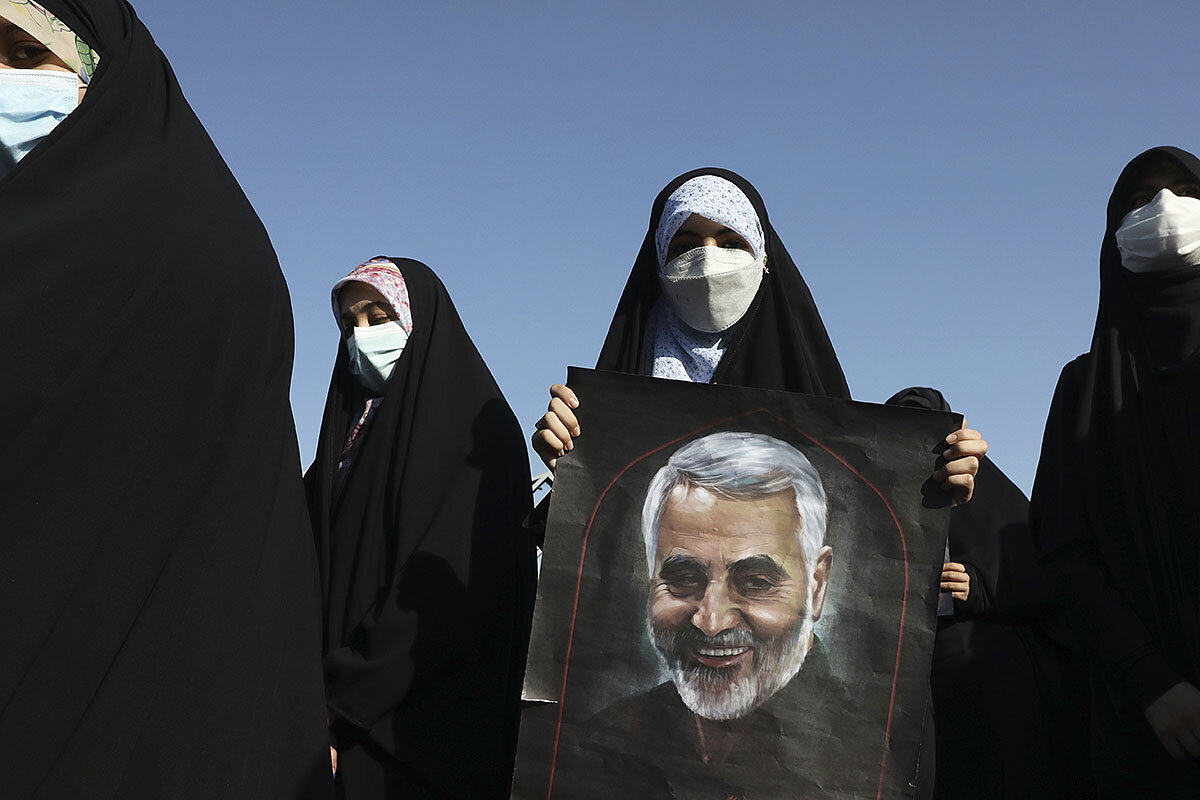
When Israel and the militant Islamic group Hamas agreed to a cease-fire last week, ending 11 days of airstrikes and rocket fire, both sides claimed victory.
So did Iran.
The Palestinians have transformed themselves from “rock-throwing protesters into rocket-firing fighters,” boasted Hossein Salami, commander of Iran’s Islamic Revolutionary Guards.
Hamas’ patrons in Tehran have shepherded the radical Palestinian organization’s weapons program for over two decades, first providing Iranian rockets, then offering technology and training in how to use it in the Gaza Strip. This week they celebrated the recent fighting as evidence of another leap in Hamas’ military capabilities.
Hamas fired far more rockets at Israel, at a far faster pace, than it has ever done in earlier conflicts, and that might change Israel’s strategic calculations, experts say.
“They’ve demonstrated a capability, and a willingness to escalate, that definitely will influence future decision-making in Israel,” says Iranian missile expert Fabian Hinz. “And I think that in itself is quite a victory.”
From Tehran to Jerusalem: A Hamas rocket’s trajectory
When Israel and the militant Islamic group Hamas agreed to a cease-fire last week, ending 11 days of airstrikes and rocket fire, both sides claimed victory.
So did Iran.
Hamas’ patrons in Tehran have shepherded the radical Palestinian organization’s weapons program for over two decades. This week they celebrated the recent fighting as evidence of another leap in Hamas’ military capabilities.
“The reality is that a new Palestine has emerged which is not fighting with rocks, but with rockets,” boasted Hossein Salami, commander of Iran’s Islamic Revolutionary Guards.
The unprecedented barrage that Hamas and the smaller Palestinian Islamic Jihad (PIJ) fired at Israel fits a pattern that Iran is seeking to inscribe across the Middle East through its support for Hezbollah in Lebanon, Houthi rebels in Yemen, and militias in Iraq and Syria.
Iran “sees a trajectory where [with] every round of confrontation, the deterrence potential and the military power of its allies on the ground is increased,” says Fabian Hinz, co-author of a recent report for the London-based International Institute for Strategic Studies (IISS) on Iran’s missile and drone programs.
In Gaza, that could force Israel to rethink its strategy.
Israel undoubtedly did enormous damage to Hamas installations in the Gaza Strip, hitting 1,500 targets during the recent hostilities. Its airstrikes on Hamas’ secret rocket-building factories displayed its intelligence prowess, and it shocked Hamas by killing a number of its military commanders in hiding, while destroying some 60 miles of underground tunnels known as the “Hamas metro.”

But the progress that Hamas armorers have made since the last sizable Israel-Hamas war in 2014 was startling. Over the 11 days of the recent conflict they shot 4,360 rockets at Israel, more than quadrupling the rate at which they fired during two months of hostilities in 2014, and for the first time they targeted Jerusalem, previously out of range.
On a number of occasions, the intensity of the indiscriminate rocket barrages – the rockets have no guidance systems – briefly overwhelmed Israel’s Iron Dome air defense.
None of this would have been possible without Iranian assistance, says Dr. Raz Zimmt, an Iran expert at the Institute for National Security Studies at Tel Aviv University.
“In the past they certainly used Iranian-made rockets,” says Dr. Zimmt. “The trend we’re seeing, not just in Gaza, but also with Hezbollah and with the Houthis in Yemen, is that they’re moving from buying weapons from Iran to using technology from Iran to manufacture them domestically.”
The IISS report notes that Hamas has moved beyond “very primitive” early designs to longer-range rockets, “massively aided” by Iran. It cites leaked intelligence documents showing that Iranian experts trained PIJ technicians in the production of solid rocket fuel chemicals, and even tried to set up a factory in Syria to make them.
“We do say this loud and clear … Iranians are the ones who support us with weapons, money, and food,” a senior PIJ official, Ramez al-Halabi, told an Iraqi TV channel on the eve of the fight.
After the battle, Hamas political chief Ismail Haniyeh said in a televised speech that Iran “did not hold back money, weapons, and technical support. Thanks.”

Hamas and the PIJ are elements of the Iranian-led “Axis of Resistance” against Israel and U.S. influence in the Middle East; fellow participants include the Shiite Muslim Hezbollah organization in Lebanon, which also briefly joined in the recent conflict by firing a few of its rockets at Israel, and Houthi rebels in Yemen, who have fired Iranian-supplied or Iranian-designed missiles deep into neighboring Saudi Arabia.
The model for Hamas’ development, says Mr. Hinz, is Hezbollah’s transformation, with extensive Iranian financial and technical help, from a “rag-tag band of Shia militiamen” in the 1980s, when Israel enjoyed free rein in southern Lebanon, into “a major military force that deters large Israeli action,” and whose rockets can reach anywhere in Israel.
“That’s quite a success story, and I think it’s the kind of prism through which Iranian leaders see the rocket arsenals of their allies and proxies,” says Mr. Hinz.
Hezbollah is believed to have an arsenal of 150,000 rockets and missiles, with greater range and accuracy than anything Hamas can claim. While the Gaza Strip is sealed off by Israel and Egypt, precluding most smuggling operations, Iranian convoys can carry weapons overland to their proxy militias in Iraq and Syria – and through them to their allies in Lebanon – and by sea to Yemen.
“When [Iran] sees the situation of the resistance camp today, in comparison to what it used to be five or 10 years ago, the bottom line is this might be quite impressive for them, despite all the problems,” says Dr. Zimmt.
Those problems include a string of humiliations the Islamic Republic has suffered at the hands of Israel’s Mossad intelligence agency, including the assassination of its top nuclear scientist last November, and sabotage attacks on its nuclear sites.
Hamas appears to still be receiving some smuggled weapons from Iran that evade Israeli naval patrols along the Gaza coast: A documentary film that aired last September on Al-Jazeera TV showed members of Hamas’ armed wing, the Al-Qassam Brigades, unpacking Iranian Fajr-5 missiles.

The Israel Defense Forces are reported to have detected waterproofed packages of weapons, some floated in barrels, dropped offshore by speedboats operating from Egypt and Lebanon at points where sea currents and prevailing winds carry them to the Gaza coast.
But the bulk of the rockets Hamas fired during the most recent hostilities were manufactured in the Gaza Strip, foreign analysts agree, sometimes using unexploded Israeli ordnance left after the 2014 war or water pipes salvaged from former Jewish settlements abandoned in 2005.
The advances that Hamas has made in rocket building, revealed by the fighting earlier this month, will change Israel’s strategic calculations, analysts say.
Until now, Israel’s policy toward Gaza has been “to maintain as much quiet as possible” and to prolong the interludes between bouts of conflict, says Dr. Zimmt.
If Hamas restarts its rocket factories, though, the government would have to decide whether “to start a preventive war against Hamas and again expose all Israel to rockets coming from Gaza. Or should we just wait and do nothing?” Dr. Zimmt points out. “This is a very big dilemma in Israel.”
Such a dilemma for Israel is an achievement for Iran and Hamas, suggests Mr. Hinz. “They’ve demonstrated a capability and a willingness to escalate that definitely will influence future decision-making in Israel,” he says. “And I think that in itself is quite a victory.”

The Explainer
California has the most gun-control laws in US. Do they work?
Under Ronald Reagan, California became the birthplace of the modern gun-control movement, and now has more than 100 laws. But how effective are they – and can they stop mass shootings like in San Jose?
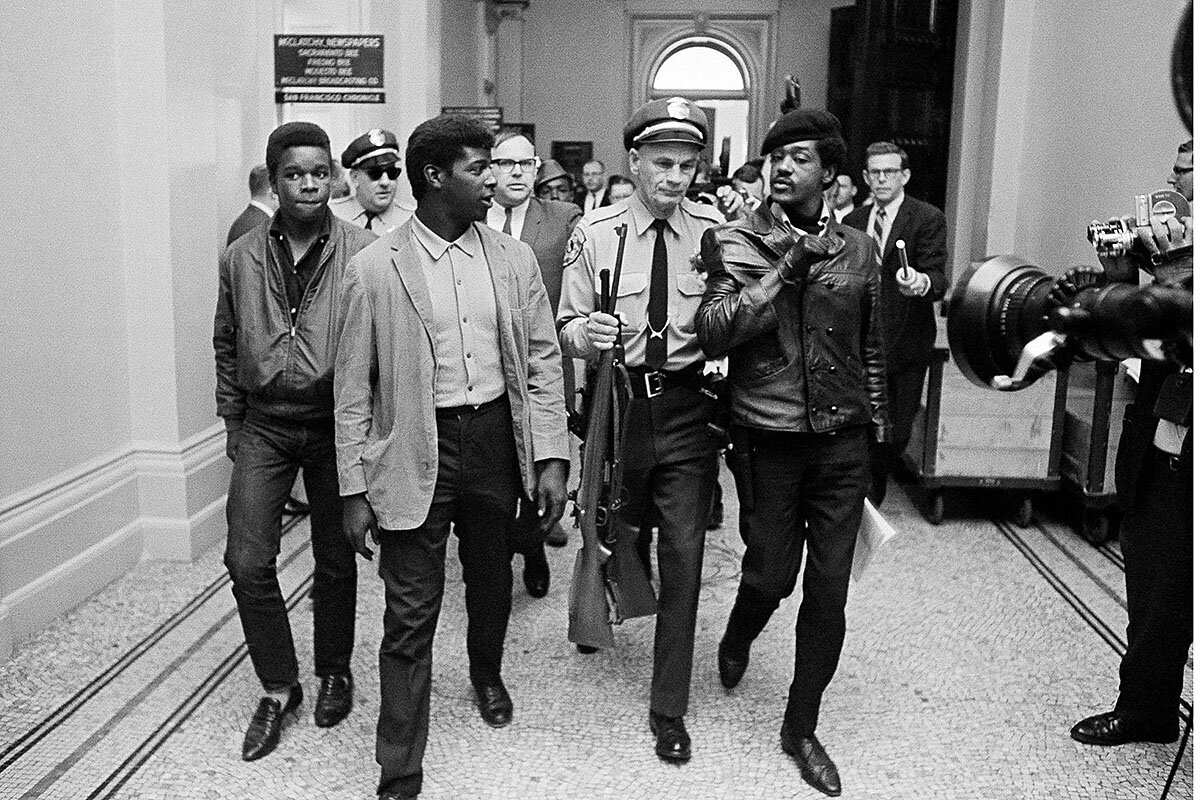
- Quick Read
- Deep Read ( 6 Min. )
-
Nick Roll Correspondent
California is the most regulated state in America when it comes to restricting the sale, use, and ownership of guns. Gun-control advocates call it the national leader, the “tip of the spear” setting the tone for other states, as Christian Heyne of the gun-control advocacy group Brady puts it.
The Golden State also has had a series of high-profile public mass shootings in recent years – most recently, in San Jose. On May 26, a gunman opened fire on co-workers at the Santa Clara Valley Transportation Authority, killing nine people, then taking his own life.
How did California come to play this vanguard role, and how effective is its approach?
Half a century ago, Republican Gov. Ronald Reagan signed into law a ban on openly carrying loaded firearms in cities and towns. In recent decades, it’s been liberals pushing for more regulations.
California isn’t the state with the least amount of firearm deaths, but it is in the bottom quintile, says Dr. Eric Fleegler, an emergency physician at Boston Children’s Hospital who researches gun violence. Crucial, he says, are California’s laws on universal background checks, gun storage, and gun ownership for people with a history of domestic violence or restraining orders.
California has the most gun-control laws in US. Do they work?
California is by far the most regulated state in America when it comes to restricting the sale, use, and ownership of guns. Gun-control advocates call it the national leader, the “tip of the spear” setting the tone for other states, as Christian Heyne, vice president of policy at Brady, a gun-control advocacy group, puts it.
The Golden State also has had a series of high-profile public mass shootings in recent years – in San Bernardino, Thousand Oaks, and this week, San Jose. On May 26, a gunman opened fire on his co-workers at the rail yard facility of the Santa Clara Valley Transportation Authority, killing nine people, then taking his own life.
Below, the Monitor looks at how California came to play this vanguard role, and the effectiveness of its approach.
How did California become the king of gun regulation?
On May 2, 1967, protesting members of the Black Panther Party marched into the Capitol in Sacramento carrying loaded handguns, shotguns, and rifles. Not long after, Republican Gov. Ronald Reagan signed into law a ban on openly carrying loaded firearms in cities and towns.
Since that time, though, it’s liberals who have been pushing for more regulations, though not always successfully. In 1982, California voters soundly defeated a ballot proposition to restrict handgun ownership. A strong 63% opposed the measure. But fast-forward and it’s the exact opposite. In 2016, that same percentage of voters backed a ballot initiative that banned high-capacity magazines and put new restrictions on ammunition sales.
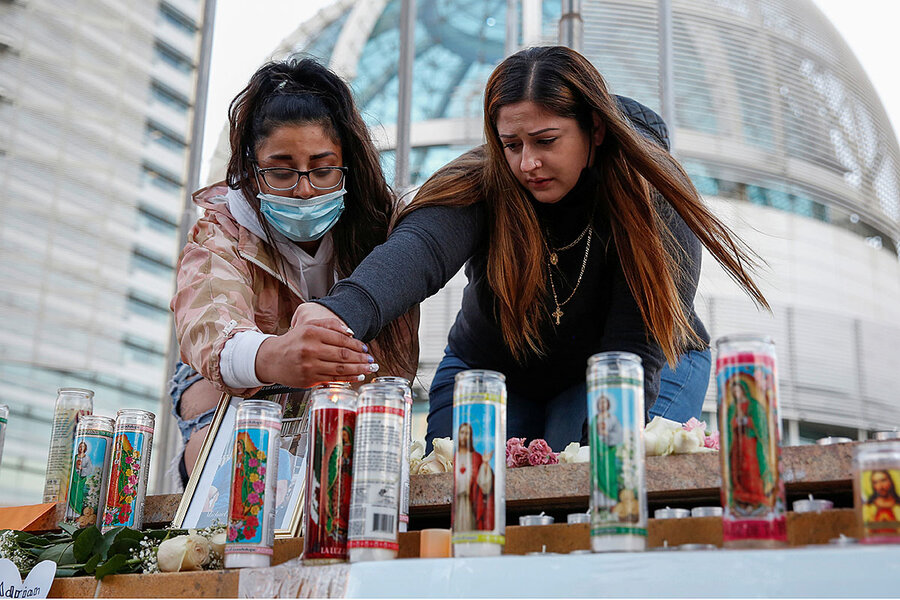
The gunman in San Jose had semiautomatic handguns with magazines that were banned under a 2016 law. That law is currently awaiting an appeals court decision.
“Support for gun control has increased as support for the GOP has plunged,” says John Pitney, a professor of political science at Claremont McKenna College in Claremont, California. In an email, he writes that the state turned blue in the 1990s, when Latinos pushed back against anti-immigration efforts, and the economy shifted from GOP-leaning defense workers to Democratic-leaning tech workers. Today, registered Republicans account for less than 25% of the electorate.
How effective are California’s gun-control measures?
As of 2020, California had more gun laws – 107 – on the books than any other state, according to research from the State Firearm Laws Database. And while those laws haven’t made California the state with the least amount of firearm deaths, it does put it around the bottom quintile, says Dr. Eric Fleegler, a pediatric emergency physician at Boston Children’s Hospital who researches gun violence and regulations.
Crucial, Dr. Fleegler says, are California’s laws on universal background checks – a solution to “a huge loophole in the federal background check” – as well as laws on gun storage, laws relating to gun ownership for people with a history of domestic violence, and people with restraining orders. These measures are intended to help with all types of gun violence – from suicides to accidents – not just murders and mass shootings.
“They really cover a broad gambit,” Dr. Fleegler says. But, he adds, where there are guns, there will always be gun deaths, intentionally or otherwise. “While legislation on the one hand can certainly lead to some reductions in the number of guns owned at the state level, they don’t actually prohibit the purchase of guns,” he says. “[Regulations] do a more thoughtful approach to who has them, how do you store them, if someone has domestic violence as part of their history, remove them from actually owning them.”
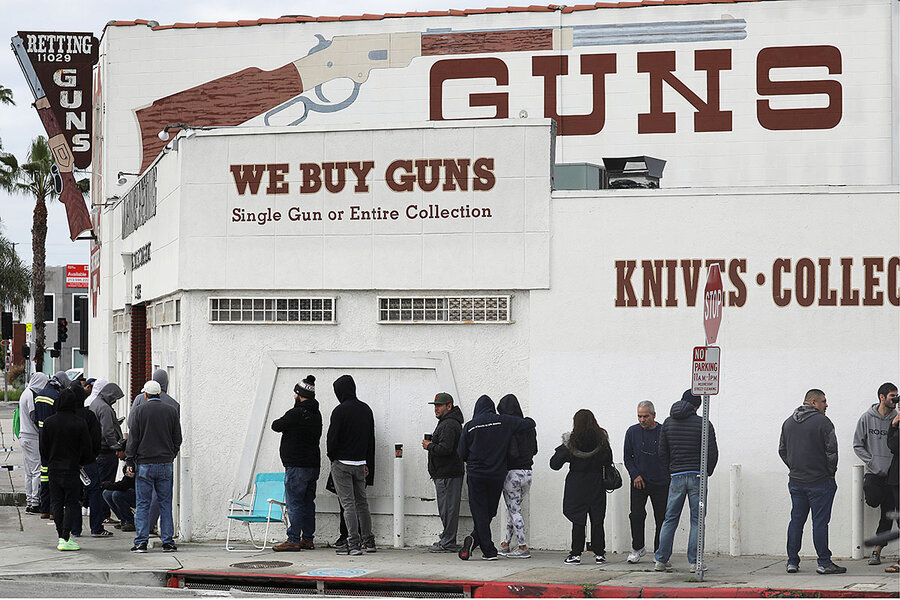
Mass shootings have an element of surprise or randomness that can make prevention difficult, even with other gun-control measures in place. “Those [shootings] are extremely distinct” from other forms of gun violence, Dr. Fleegler says. So-called red-flag laws, which allow for the confiscation of guns from those who are deemed a risk to themselves or others, can be a good step, he says. But “it’s one thing to pass legislation, it’s a whole other thing to enforce legislation,” he adds – as was highlighted when those laws didn’t prevent a recent shooting in Indianapolis.
What happened in 2020?
Gun sales in California – and the nation – surged last year, spurred by racial and political unrest, economic insecurity, and the uncertainty of the pandemic. According to state data released in March in a court case, about 1.17 million new guns were registered in the state in 2020 – the most since 2016. The buying spree continued into the first part of 2021.
In 2020, there were just two public mass shootings in which four or more people died – down from 10 in 2019, the worst year on record, according to experts on mass shootings. That’s due in part to pandemic lockdowns. However, overall shootings increased – with more than 600 incidents where four or more people were shot, up from 417 in 2019. And violence generally increased by 20% or more in many large and small cities, California’s included, writes Dr. Garen Wintemute, a professor of emergency medicine and violence prevention at the University of California, Davis. Through mid-2020, the size of the increase in violence was proportional to the size of the increase in gun sales, he writes in an email.
“There was ... social disruption on many fronts, on a scale we’ve not seen in many years. We are just beginning to experience the effects of those interacting changes,” he explains. “We are likely to have a rough summer.”
Has California’s approach caught on elsewhere?
When it comes to red-flag laws, “it was California that really created the model we see today,” where both police and family members can initiate the process, says Mr. Heyne at Brady. Indiana and Connecticut were the first states to have such laws. But following California’s passage, 16 states and the District of Columbia passed laws similar to the Golden State’s – including five with Republican governors.
California is also home to the University of California Firearm Violence Research Center, the first state-funded center for such research. It’s part of a holistic approach to gun violence “that is something that we have seen other states also pick up,” Mr. Heyne says. But after the San Jose shooting, “we still have a lot of work to do.”
Part of that work, advocates like Mr. Heyne believe, will have to come from Congress. California isn’t an island, he notes, and guns can flow across its borders. But the state has leaders at the federal level who’ve long championed gun control.
Sen. Dianne Feinstein was the architect of the 10-year federal assault weapons ban passed in 1994, and has pushed for its reinstatement. Her home state bans assault weapons. Other California Democrats, such as House Speaker Nancy Pelosi and Vice President Kamala Harris, have also pushed for gun-control measures, though few reforms have passed at the federal level in recent decades.
Nationally, “we do very little to screen individuals or to separate [from firearms] individuals that we know are at risk of dangerous behavior,” Mr. Heyne says. “If we want to really address gun violence in all of its forms, we need a comprehensive approach that is tactical, that is surgical, that is very specific to addressing the types of gun violence that exist in America, because it’s not a monolith. All of these different forms of gun violence require different solutions.”

Israel’s goal: A rebuilt Gaza, without a rearmed Hamas
Can Israel and Hamas break out of the cycle of recurrent violence that has afflicted them? Some in Israel say that the path to peace will only be paved with Gaza’s prosperity.
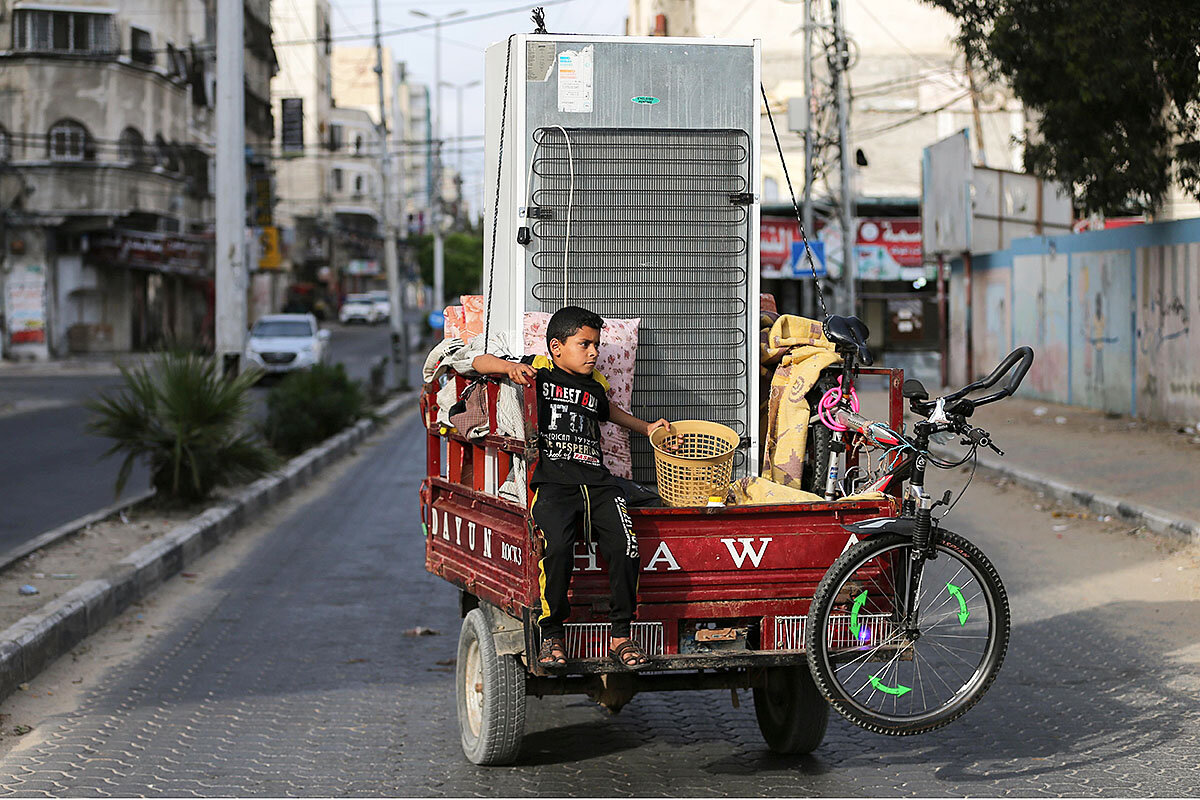
- Quick Read
- Deep Read ( 5 Min. )
The fighting between Israel and the Islamist group Hamas that rules the Gaza Strip is over, for the time being, halted by a truce. But as international aid pours into Gaza to help repair the destruction wrought by Israeli bombers, Israel and the international community face a precarious balancing act, one that has eluded them before.
The challenge? To improve the lives of 2 million Gazans, many of them mired in poverty, while ensuring that Hamas does not spend aid money on rebuilding its rocket arsenal. And in the process, perhaps end the cycle of violence for good, rather than simply postponing its resumption.
The hope is that more economic prosperity would give Gaza’s residents a greater stake in stability, and encourage them to put pressure on Hamas not to provoke tensions with Israel. That prospect, though, depends heavily on Israel lifting its blockade on Gaza, allowing people and goods to move more freely.
“We need to be more sophisticated,” says Ronni Shaked, a prominent Israeli political commentator. “Not just for the Palestinians but for the future of the state of Israel.” Otherwise, he fears “we are just at the beginning of a countdown to the next war.”
Israel’s goal: A rebuilt Gaza, without a rearmed Hamas
This week – after a truce between Israel and Hamas quietened the skies – columns of trucks have been rumbling into the Gaza Strip, stacked high with boxes of international aid for beleaguered residents.
They mark the first step in a new effort by Israel and the international community to pull off a precarious balancing act, one that has eluded them in the past.
The challenge? To improve the lives of the 2 million people in Gaza, where many are mired in poverty, while ensuring that the Islamist militant group Hamas, which rules the enclave, does not spend the aid money on rebuilding its rocket arsenal.
As Israel emerges from perhaps the most bruising of its four wars with Hamas, some Israeli government and defense officials are beginning to ask how they might end the cycle of violence for good, rather than simply postpone its next eruption.
Israel should not “turn a military victory into a diplomatic missed opportunity,” insisted Benny Gantz, Israel’s defense minister, in his first public comments since a cease-fire ended 11 days of indiscriminate rocket fire from Gaza onto Israeli cities and punishing retaliatory bombing raids.

Mr. Gantz offered no details of any diplomatic or strategic moves Israel might make to bring long-term peace to the Gaza Strip, but his reasoning is clear: If Gazans’ everyday lives were made more livable, they would have a greater stake in stability and put more pressure on Hamas not to ratchet up tensions with Israel.
Former U.S. Mideast envoy Dennis Ross agrees. Hamas rulers “coerce their public, but they are not indifferent to their public,” he told The Times of Israel on Wednesday.
Start from the bottom
With peace between Israelis and Palestinians still a distant dream, diplomats are keeping their eyes on the ground. “We know that to prevent a return to violence, we have to use the space created [by the cease-fire] to address a larger set of underlying issues and challenges,” said U.S. Secretary of State Antony Blinken after meeting Israeli and Palestinian leaders this week.
“That begins with tackling the grave humanitarian situation in Gaza and starting to rebuild,” he added.
Mr. Blinken announced the White House would ask Congress for $75 million in economic development aid for the Palestinians. To address immediate needs in Gaza, he said the United States would provide $5.5 million and give another $32 million to the United Nations Relief and Works Agency, UNRWA.
That money is badly needed. One of the most densely populated places in the world, the Gaza Strip suffers from rudimentary and unreliable electricity, water and sewage services, 60% youth unemployment, and a deep sense of frustration.

The mood is intensified by Israel’s grip on Gaza. Although Israel dismantled Jewish settlements there and withdrew its soldiers in 2005, it controls six of the seven border crossing points (the other leads to Egypt), Gaza’s airspace, and its coastline. It strictly limits who and what goes into and out of the enclave, giving Israel tight control of key economic levers.
In recent years it has relaxed its blockade on Gaza somewhat, allowing 10,000 residents to work in Israel, for example, and permitting the import of some goods that cannot be used or adapted for military purposes, identified as “dual use.”
But the Israeli government could be much more generous, says Sari Bashi, an Israeli expert in international humanitarian law. She says the blockade is an example of collective punishment, not justified by security considerations, and now would be a good time to lift it completely.
“The restrictions on goods leaving Gaza for sale in Israel and the West Bank are political, not security related, and lifting them would provide an economic boost,” she argues. “Same for restrictions on many kinds of inputs called dual use goods; and allowing laborers and merchants to travel into and out of Gaza.”
How to do it
But there will be conditions on international aid aimed at reviving the Gazan economy. “Asking the international community … to rebuild Gaza only makes sense if there is confidence that what is rebuilt is not lost again because Hamas decides to launch more rocket attacks in the future,” Mr. Blinken cautioned.
Some observers, though, do not think any amount of aid will help. “We have a crazy fantasy that a new economy will make Hamas less hostile,” laments Dan Schueftan, a security analyst who once advised the late Israeli Prime Ministers Ariel Sharon and Yitzhak Rabin. “But over the years they have received billions of dollars [in foreign aid] and it’s failed.”

A number of mechanisms are being floated to ensure Hamas does not, for example, divert cement shipments intended for the reconstruction of homes or sewage pipes to the repair of the underground tunnels where it stores rockets and hides its fighters.
They include bringing in United Nations or Egyptian inspectors; boosting the role of the more moderate Palestinian Authority, Hamas’ rival which rules the West Bank; inviting foreign companies to do some of the rebuilding; stepping up intelligence sharing between Israel and Egypt on what’s happening on the ground; and installing tracking devices on delivery trucks and remote cameras in warehouses to monitor incoming goods.
“I don’t think anyone has fleshed this out,” says Neri Zilber, a journalist and adjunct fellow of The Washington Institute. “That’s why it’s so difficult. You can put a thousand ideas down on a piece of paper in a conference room, but that does not change the fact that Hamas will still be controlling things on the ground.”
“We need to be more sophisticated, not just think about this for the Palestinians, but for the future of the state of Israel,” argues Ronni Shaked, a columnist at Yediot Ahronot, a leading Israeli newspaper, who would like Israel to formulate a clear vision of aid to Gaza. “I’m worried we are just at the beginning of a countdown to the next war.”

Schools and trust: What works for communities of color
How do schools build trust with families? As students return to classrooms, diverse communities in California offer ideas for moving forward from inequities amplified by the pandemic.
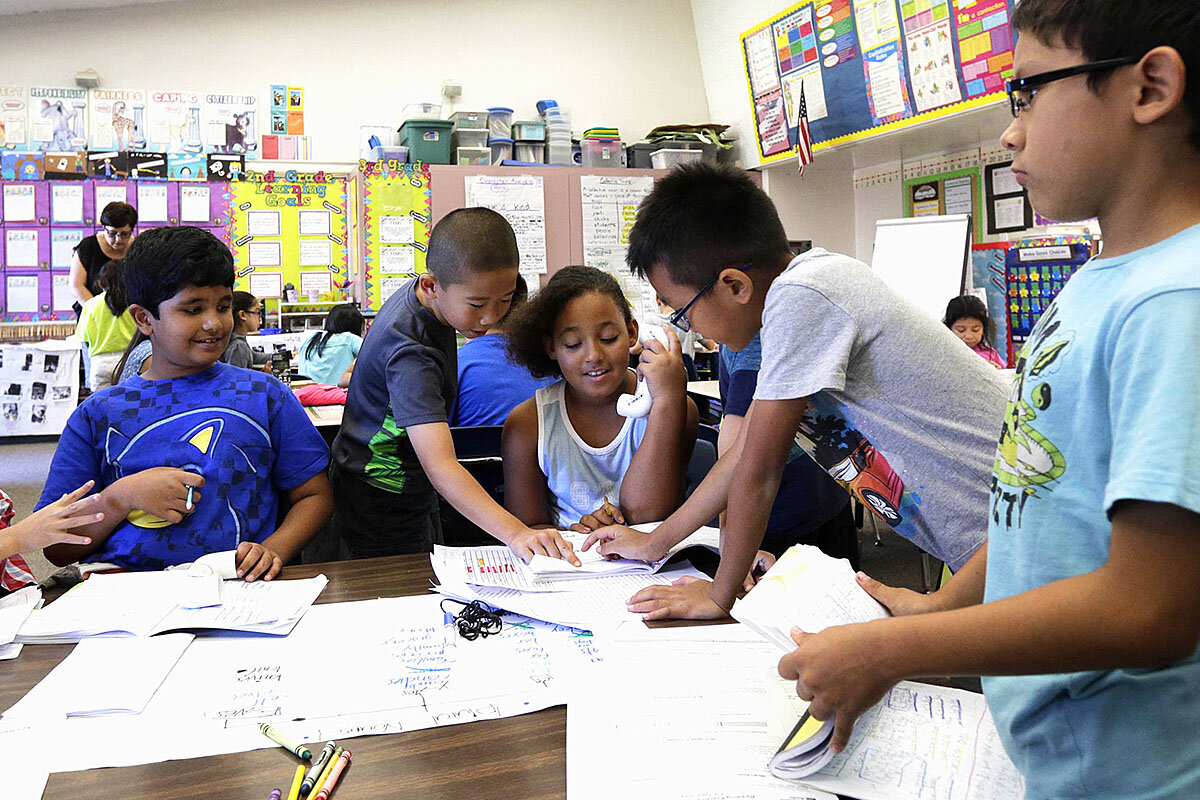
- Quick Read
- Deep Read ( 7 Min. )
-
By Chanté Griffin Correspondent
This spring, surveys showed Black and Latino parents were less inclined to have their children return to in-person schooling than their white counterparts. Attention to health protocols, infrastructure issues, and worry about putting intergenerational households at risk are among the concerns. Some families in these demographic groups have turned to home schooling and learning pods instead.
At a time when public schools are trying to be seen as a viable option, the pandemic has magnified long-standing issues like racial inequity and lack of support, say parents and advocates from communities here in California and in states like New York. But some have suggestions for how schools can move forward, building trust and bringing all families with them. They say that diversifying the teacher pool, teaching inclusive curriculum, supporting parents holistically, and bridging the digital divide are all necessary.
The trust-building starts with a focus on uplifting the poorest students – a move that will benefit students of color and all students, says Natalie Wheatfall-Lum of The Education Trust–West, an advocacy group. As she sees it, “A rising tide lifts all boats.”
This story was supported by a grant from the Solutions Journalism Network, a nonprofit organization dedicated to reporting about responses to social problems.
Schools and trust: What works for communities of color
As COVID-19 swept through San Diego’s City Heights community, a diverse neighborhood with a robust population of immigrants from Latin America, Vietnam, Cambodia, and Somalia, Hoover High School evolved from being a learning hub for teenagers to being a communal educational hub for COVID-19 information, safety practices, testing, and vaccinations.
Principal Jason Babineau says the trust the school has built with the surrounding community, over multiple years, produced such a sense of safety that 60% of its students have returned for in-person instruction since the school reopened in April.
“The element of trust within an entire community is paramount always because we’re taking care of community members’ and parents’ children,” he says. “But in times of public health crisis, there’s nothing more important than trust and solid partnership, and that is developed over time.”
As Hoover High and other public schools in California return to classroom instruction, building community and trust is critical since 60% percent of the state’s six million students identify as Black, Latino, or Hispanic. Those groups, along with low-income students, reported the poorest educational outcomes pre-pandemic and experienced significant learning losses during the last year.
At a time when public schools are trying to be seen as a viable option, the pandemic has amplified long-standing issues like racial inequity and lack of support, say parents and advocates from communities here and in states like New York. But some have suggestions for how schools can move forward, bringing all families with them. They say that diversifying the teacher pool, teaching an inclusive curriculum, supporting parents holistically, and bridging the digital divide are all necessary tools for creating community and achieving student success.
“We can’t go back to school as usual because we’ve had equity issues for decades,” says Natalie Wheatfall-Lum, director of P-16 Education Policy at The Education Trust–West, a nonprofit that seeks to close the educational gap for students of color and those living in poverty.
Acknowledging “ghosts” of the past
Keri Rodrigues, founding president of the National Parents Union, which advocates for the educational needs of children, says it’s important to recognize that “people who are parents today were students yesterday.”
Parents of historically underserved students don’t automatically trust their children’s schools to educate them, she says, because “there are still ghosts in the classroom for many of us who were underserved or pushed out or treated badly.” Her overall message for educators: Listen and partner with us.
This spring, surveys showed Black and Latino parents across the United States were less inclined to send their children back to in-person schooling than their white counterparts. Attention to health protocols, infrastructure issues, and worry about putting intergenerational households at risk are among the concerns. Asian parents are also hesitant due to the recent spike in anti-Asian assaults. Some families in these demographic groups have turned to home schooling and learning pods instead.
Just over half of California public school students, 55%, many from low-income families, were still learning remotely from home as of the end of April, according to an analysis from the Oakland-based nonprofit EdSource.
For Ms. Wheatfall-Lum, the trust-building starts with a focus on uplifting the poorest students, a move that will benefit students of color and all students. As she sees it, “A rising tide lifts all boats.”
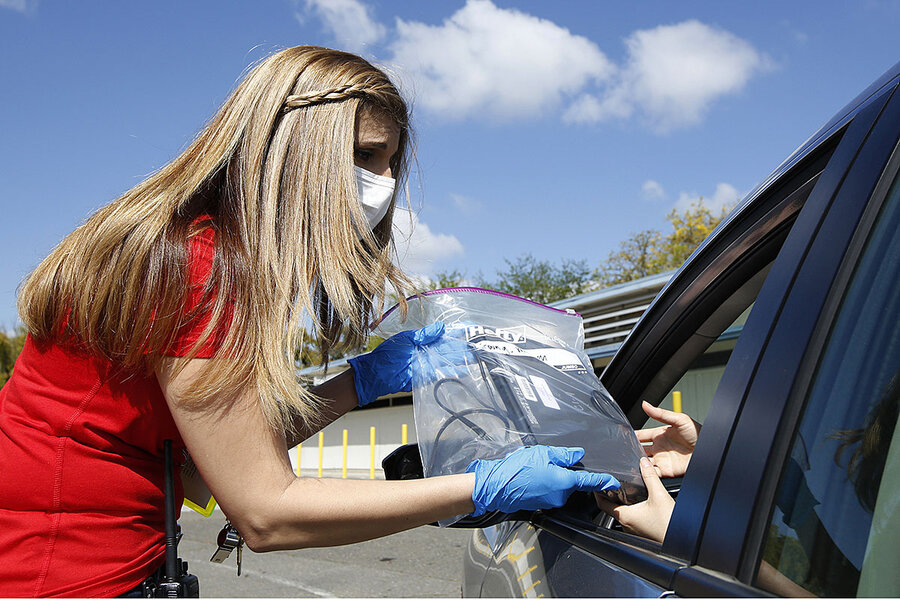
For example, school advocates have long lauded the importance of bridging the digital divide between low-income students and their more affluent peers to improve educational outcomes. Although there is more work to be done closing the gap, the pandemic revealed that giving students access to technology also increased communication and partnership between families and schools.
At Hoover High – part of the San Diego Unified School District, the second largest in the state – maintaining community has included using Zoom for outreach. Some meetings are confidential forums where immigrant families in particular can ask questions anonymously. In recent years, the school has stayed attuned to those it serves by using surveys, understanding language needs, and really listening to parents. Technology is Hoover High’s latest means of support, with Principal Babineau estimating that Zoom and other platforms have “increased parental involvement, by at least double.”
Kisha Borden, president of the San Diego Education Association, a teachers union, praises the district’s laptop and hotspot distribution efforts. But she adds, “It is a little concerning that before COVID we had that many students who needed technology who just couldn’t get it.”
“If we keep all of those devices [85,000] in the hands of our students and we continue to advocate for broadband access and Wi-Fi access,” she says, then students from low-income communities can have access to the same educational resources that those from wealthier neighborhoods have always had.
Moves like that would improve achievement for underserved students and engender more trust with their families, advocates say.
More than just academics
Schools that want to shift outcomes for young people “have to take more responsibility and care for the mamas and daddies that they [students] come from,” says Lakisha Young, the executive director of Oakland REACH, a parent-led group that created a Virtual Family Hub in 2020.
The holistic model her group offers – which has boosted student achievement and includes partnering with the local school district – has attracted the attention of other districts and parent advocacy groups around the U.S. Besides assisting students with tutoring and after-school activities, Oakland REACH supports parents with tech training on topics like Gmail and Zoom and with financial literacy courses and job opportunities.
Ms. Rodrigues agrees with this community-building approach. “Parents are out there trying to do the best that they can,” she says. “We’ve got to say – once and for all – ‘We’re going to break this cycle of poverty. We’re going to help parents. We’re going to help heal communities.’”
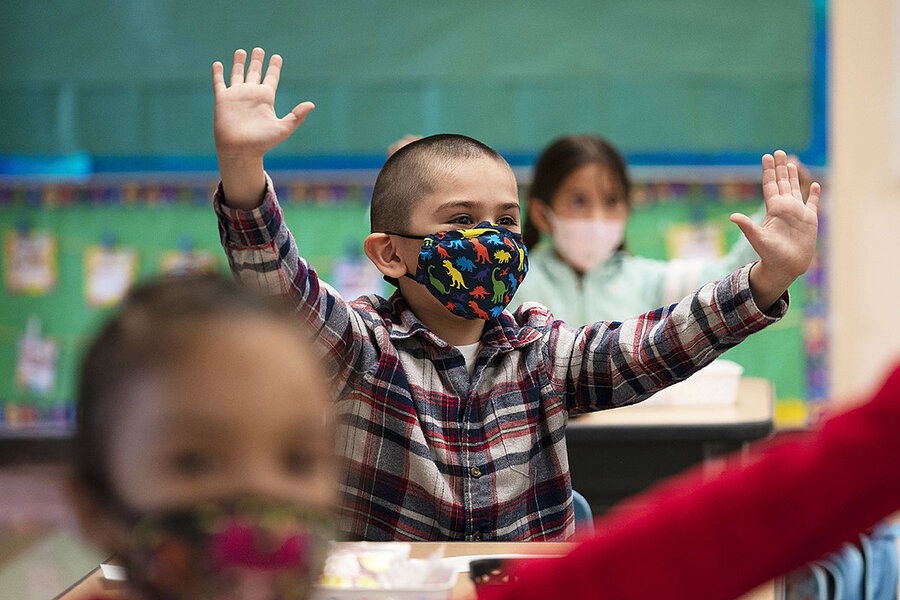
A focus on what’s being taught
School reform advocates say that retooling curriculum to be inclusive also builds trust with families of color.
California had already been increasing ethnic studies coursework before state legislatures elsewhere in the U.S. recently started passing laws prohibiting some types of anti-racist instruction. San Diego Unified School District has an ethnic studies graduation requirement that will go into effect for freshmen entering high school this fall. Los Angeles Unified has a similar requirement; and the state of California, after contentious debate, recently approved a statewide ethnic studies curriculum for high schools, the first of its kind in the nation.
Ms. Wheatfall-Lum, from The Education Trust–West, echoing other school advocates, says what’s taught should reflect “the experiences of all students in the classroom” to ensure that their identities “are valued and lifted up in the day-to-day work that they’re doing.”
Teaching culturally affirming curriculum, they all say, shows families that they are seen, valued, and understood by school leaders.
Hoover High senior Erick Belmudez took a Chicano studies course in 2019, the fall of his junior year. For him, such courses are necessary and eye opening.
“It’s the things we never hear about in history: what happened to other countries and people,” he says, adding that it’s critical for students “to learn about others’ background and why we’re divided.”
In general, he says his teachers have done a good job handling race-related issues that have arisen nationally and in California. “Hoover has made it so that we feel a sense of belonging,” he says.
Also on the wish list: teacher diversity
Christina Laster, an Afro Latina parent of four, says that the pool of educators must diversify if schools in the Golden State want to meet the needs of its diverse population.
Ms. Laster, who lives in Palm Springs and works as the director of policy and legislation with the National Parents Union, says her children and grandchildren “need teachers that look like them.”
Studies have shown that teachers of color positively affect the educational outcomes for students of color and all students. This month, San Diego Unified School District announced a new effort to diversify its teachers and district staff by recruiting students and community members. While about 76% of students in the district identify as people of color, only about a third of teachers do.
A national push for more diversity is also underway. President Biden has included teacher diversity in his American Families Plan, and an open letter asking for the topic to be a priority was sent this week to Miguel Cardona, the secretary of education, signed by groups including The Education Trust, National Parents Union, and State of Black Education Oakland.
The needle moved a bit in Massachusetts during the pandemic with the state’s allowance for emergency teaching licenses resulting in at least 25% of some 7,000 licenses as of March being given to teachers of color. San Diego Unified School District plans to offer stipends to students who enroll in training programs and return to work in its schools. One of the groups that sent the open letter to Washington, The Center for Black Educator Development, uses a model that trains high schoolers to teach early literacy skills to primary school students, and provides paid apprenticeships and fellowships for teacher candidates through community funders, according to founder and chief executive officer Sharif El-Mekki.
As schools continue to work toward communities of trust with families, Ms. Laster's hope for all children mirrors her hope for her own: “I want them to be free to learn and thrive.”
This story was supported by a grant from the Solutions Journalism Network, a nonprofit organization dedicated to reporting about responses to social problems.

Television
Too much trowel and error? These gardening shows could help.
As spring turns into summer, gardeners far and wide are delighting in the fruits of their labor. No dirt to dig in? These TV shows are an entertaining and relaxing substitute for the real thing.

Too much trowel and error? These gardening shows could help.

As the weather warms up and the days stretch longer in the Northern Hemisphere, the call to being outside grows greater. Gardening is the perfect reason to stray away from your desk or procrastinate finishing those household chores. It doesn’t take much to call yourself a gardener – simply plant something in the earth or in a soil-filled pot, tend to it, and watch it grow.
With a lot of time at home last year, many people either discovered the joys of plants for the first time or finally expanded their green thumb efforts. Maybe you have a new appreciation for growing your own food, or you enjoy planting native plants for pollinators, or maybe you have a few (or a few dozen) houseplants perched on a windowsill or lining your patio in containers. Now blooms a new season as those garden projects started in the quiet days of last year have taken root and grown.
When you finally come inside for the day, here are a few TV shows you can relax with and learn from as you dream up your next outdoor project.
Of birdsongs and gardens
Monty Don is the perennial host of the BBC’s long-running “Gardeners’ World” (TV-G). Available on BritBox and Acorn, the show, spanning 53 seasons, is a respite with its birdsongs and gentle narrative of growing gardens. Don’s tips are interspersed with garden visits – including to a young man in Cumbria, England, with an affinity for tropical plants – and videos from viewers, including an Oregon gardener who started seedlings outdoors in winter using old milk jugs.
“Martha Knows Best”
Martha Stewart invites viewers to her 153-acre farm in Bedford, New York, on “Martha Knows Best” (TV-G). There’s a lot happening besides gardening, but you’ll pick up new ideas in between the tree planting, dog washing, and Stewart’s video calls with friends like rapper Snoop Dogg. She also surprise-calls fans looking for gardening advice and doesn’t hesitate to give her opinion on their home and garden hacks. Catch the show on HGTV and streaming platforms.

Watch the masters at work
If you’re attracted to gardens on a grand scale, check out two fairly recent documentaries about Beatrix Farrand and Frank Cabot available on Amazon Prime Video. “Beatrix Farrand’s American Landscapes” (unrated) centers on the first American female landscape architect and early proponent of public parks. “The Gardener” (unrated) explores Cabot’s Les Quatre Vents private garden in Quebec cultivated over four decades. These artists inspire with their vision of plants as living sculptures or a floral symphony played across the seasons. Farrand and Cabot had the advantage of privilege, but they were also visionary engineers whose legacies are worthy of admiration.
Other headline stories we’re watching
(Get live updates throughout the day.)The Monitor's View
Germany’s apology to a former colony
- Quick Read
- Deep Read ( 3 Min. )
-
By the Monitor's Editorial Board
Germany’s apology today to Namibia for massacres committed by its colonial administration in southern Africa more than a century ago underscores the uneasy compromises required to reconcile the various perspectives on official apologies. “Our aim was and is to find a joint path to genuine reconciliation in remembrance of the victims,” German Foreign Minister Heiko Maas stated. “That includes our naming the events of the German colonial era in today’s Namibia, and particularly the atrocities between 1904 and 1908, unsparingly and without euphemisms.”
Under the terms of the deal, which took nearly a decade of informal dialogue and formal negotiations, Germany will fund $1.3 billion in development projects over 30 years specifically meant to redress the economic consequences of the genocide. German President Frank-Walter Steinmeier plans to formally ask forgiveness in an address before the Namibian Parliament later this year.
After a year of worldwide protests over racial injustice, reflected in backlashes against Confederate and colonial symbols, Germany and Namibia offer a road map beyond the clutches of historical pain. The test of sincerity awaits. But lifting the burdens of the past starts with a determination to see one another beyond grievance and harm.
Germany’s apology to a former colony
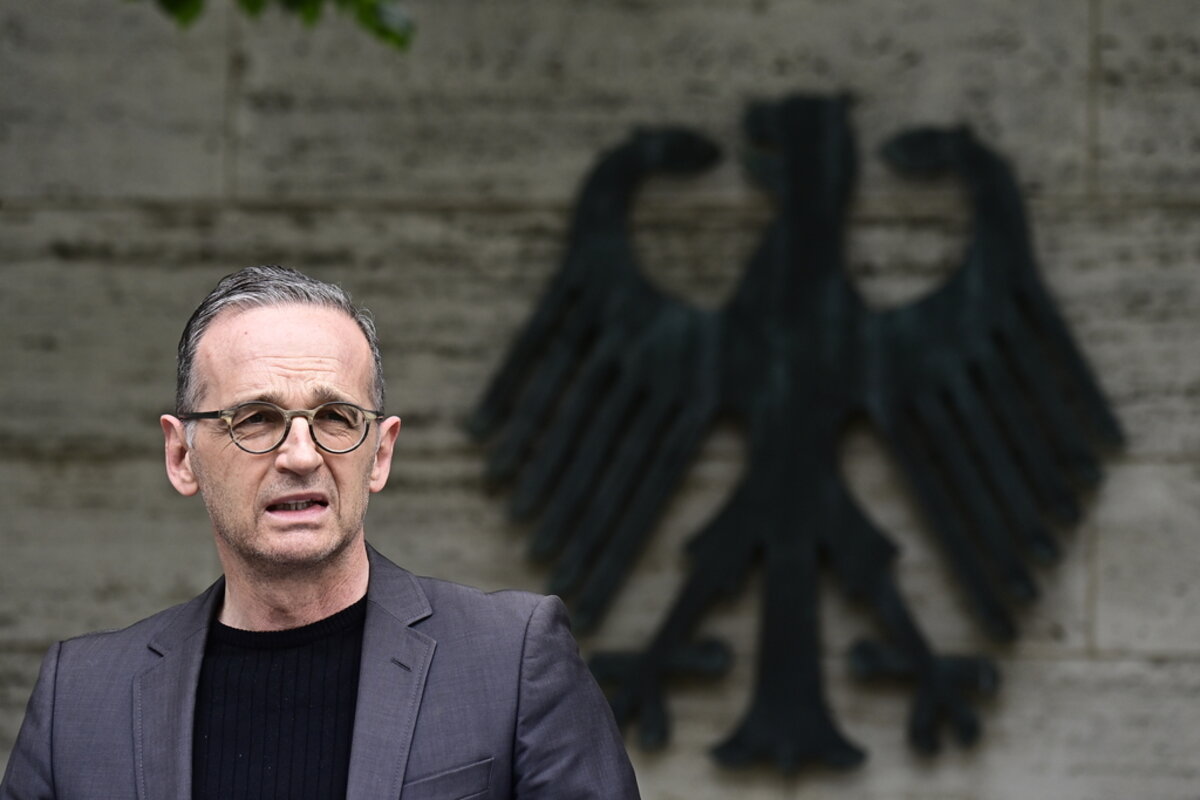
On Wednesday, French President Emmanuel Macron traveled to Rwanda to apologize for his country’s failure to intercede in the 1994 genocide there. Yesterday, Prime Minister Justin Trudeau issued an apology for the internment of Italian Canadians during World War II. And today, Germany apologized to Namibia for massacres committed by its colonial administration in southern Africa more than a century ago. “We will now also officially call these events what they were from today’s perspective: a genocide,” said German Foreign Minister Heiko Maas.
During the past 30 years, national apologies have gone from being extraordinary to, it seems, mandatory. They can mark healing turning points in relations between countries and in how societies and individuals define themselves. But they raise difficult questions about the obligations of history and require bridging what American poet Carolyn Forché calls “the mutually exclusive realms of the personal and the political.” And Angie Wong, a professor of Indigenous Learning at Lakehead University in Ontario, has warned that “a new cultural dynamic of apologism” risks reducing national expressions of remorse to crisis management.
Jonathan Sumption, a former member of the Supreme Court of the United Kingdom, argues in a new book that “what is morally objectionable about the practice of apologizing for [past] wrongs now, is that it depends upon a concept of collective and inherited guilt which is indefensible.” Yet for many communities, offenses done to previous generations may be living presents.
“History isn’t something written in a book that’s locked away in a glass cabinet,” argues Canadian documentary filmmaker Mitch Miyagawa. “It exists materially in the land around us, in our houses, in our villages and towns and cities. It’s in the way we relate to each other, and it exists in the stories we tell about ourselves and where we live. We carry history with us.”
Germany’s apology underscores the uneasy compromises required to reconcile these perspectives. In 1904 its settlements in what is now Namibia fell under siege. Weary of the brutalities of occupation, Herero tribesmen launched attacks on white farms, railroads, and colonial army posts. Ten months later another ethnic group, the Nama, pitched a second rebellion. The German response was devastating. When a census was taken several years later, it found that between 1904 and 1908 half of the Nama and three-quarters of the Herero populations – roughly 80,000 people – perished in battle, were systematically executed, or starved to death in concentration camps after the war.
“Our aim was and is to find a joint path to genuine reconciliation in remembrance of the victims,” Mr. Maas stated. “That includes our naming the events of the German colonial era in today’s Namibia, and particularly the atrocities between 1904 and 1908, unsparingly and without euphemisms.”
Under the terms of the deal, which took nearly a decade of informal dialogue and formal negotiations, Germany will fund $1.3 billion in development projects over 30 years specifically meant to redress the economic consequences of the genocide. President Frank-Walter Steinmeier plans to formally ask forgiveness in an address before the Namibian Parliament later this year.
Public atonement of an atrocity may smooth diplomatic rifts, yet it does not always salve the economic or emotional harm felt by descendants of victims. Herero and Nama families whose ancestors were slain sought individual reparations and a return of stolen family lands. Germany steadfastly rejected those demands to avoid binding itself – and perhaps other former colonial powers – to a burdensome legal precedent. Instead, it is giving money in the form of a collective restitution for those ethnic groups.
“A national apology asserts changed values, condemns past behavior, and commits to different, better actions in the future,” wrote Southern Oregon University linguist Edwin Battistella in Aeon. After a year of worldwide protests over racial injustice, reflected in backlashes against Confederate and colonial symbols, Germany and Namibia offer a road map beyond the clutches of historical pain. The test of sincerity awaits. But lifting the burdens of the past starts with a determination to see one another beyond grievance and harm.

A Christian Science Perspective
Each weekday, the Monitor includes one clearly labeled religious article offering spiritual insight on contemporary issues, including the news. The publication – in its various forms – is produced for anyone who cares about the progress of the human endeavor around the world and seeks news reported with compassion, intelligence, and an essentially constructive lens. For many, that caring has religious roots. For many, it does not. The Monitor has always embraced both audiences. The Monitor is owned by a church – The First Church of Christ, Scientist, in Boston – whose founder was concerned with both the state of the world and the quality of available news.
To comfort – and be comforted
- Quick Read
- Read or Listen ( 4 Min. )
-
By Thomas Wheatley
As we head into Memorial Day weekend in the United States, we’re recalling moving experiences where people supported those who served in the military and their loved ones. In this article, originally written in 2008, a Christian Science chaplain in the U.S. Army shares how turning to God has brought inspiration that healed his own grief and empowered him to offer meaningful comfort and strength to others, too.
To comfort – and be comforted
As I write this article, I’m preparing to revisit the spouse of one of our soldiers who was recently killed in Iraq by a suicide bomber. In my work as a Christian Science chaplain in the United States Army, I was on the Casualty Notification Team a few mornings ago, when we had to notify her of the death of her husband.
It’s heartbreaking to see the look on the face of a spouse, when he or she realizes before you even speak why you’re there. But there can also be a feeling of hope and peace when you’re able to share even a glimpse of spiritual reality with someone dealing with grief.
In this particular case, by the end of our conversation this young woman was able to voice her conviction that her husband’s spiritual life was not over but that he continued to walk in God’s presence. And she seemed to have hope for her own future as well, even though it would be without her husband’s physical presence.
Just a few months before I entered the Army as a chaplain, my father passed away. But even as I was grieving, I felt God, who is divine Mind, assure me that my father’s life was not over. That in fact, the physical body could never contain the life of anyone. That because God, who is also divine Life, had never put life into a physical form, life could never be said to pass out of it either.
I remember being comforted and strengthened by this Bible passage: “Though our outward man perish, yet the inward man is renewed day by day. For our light affliction, which is but for a moment, worketh for us a far more exceeding and eternal weight of glory” (II Corinthians 4:16, 17). In the book of Revelation, John describes “a new heaven and a new earth,” and this provided me with even greater strength. In John’s vision, there is no more death, sorrow, crying, or pain. And John says that God will always be with us and we will always be His people.
This newfound conviction was helpful to me in helping others. The first morning at my new battalion, I got a chance to share this experience with one of our infantry trainees when he learned that his father had passed away suddenly in the night. I felt that I was able to provide some genuine comfort through discussing the spiritual truth of the eternal life God gives us all, which I’d felt so strongly just a few months prior.
The Apostle Paul says, “Blessed be God, even the Father of our Lord Jesus Christ, the Father of mercies, and the God of all comfort; who comforteth us in all our tribulation, that we may be able to comfort them which are in any trouble, by the comfort wherewith we ourselves are comforted of God” (II Corinthians 1:3, 4). When we face a difficult time, and God helps us through it, we’re then able to go help others who might be experiencing similar trials, with the same spiritual truth that helped us.
Some years later, however, I found that I was really missing my father and thinking about all of the things he would never experience – and all of the things that I would miss too, as a result. And I realized that I was still grieving about the lack of his presence with me – to offer praise, encouragement, guidance.
Then God spoke to me very clearly that He was always my eternal Father, and that He had never left me. That I was His beloved son. I realized that God had always provided the guidance I needed throughout life, moment by moment.
I felt instant relief from the great sorrow I’d been feeling. And since that time I have no longer had any lingering grief about the passing of my father. I know that his life is eternal, and that he will always reflect the God that is Life. I also know that God is providing comfort to all His children.
We can learn from Christian Science about our unbroken relationship with this loving divine Father who will never abandon us. Over the years, when I haven’t known what to say to someone who was experiencing grief, this spiritual understanding has given me much inspiration. I have literally felt God giving me just the right words that would provide comfort and strength to someone who really needed it.
And this inspiration that we receive directly from God can truly bring us an increasing measure of freedom from grief.
Adapted from an article published in the Sept. 15, 2008, issue of the Christian Science Sentinel.

A message of love
Selfless sacrifice

A look ahead
We don’t publish a Daily on Monday, Memorial Day in the U.S., but watch for a special audio report. Our podcast “Tulsa Rising” tells the story of a city wrestling with its history and working to forge a better future 100 years after it became the site of a brutal race massacre. We’ll explore the lasting legacy of this event – but also the new hope that’s taking hold.




